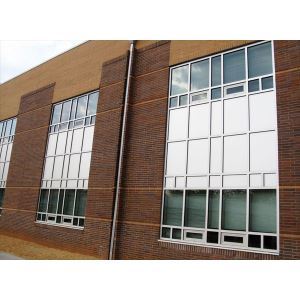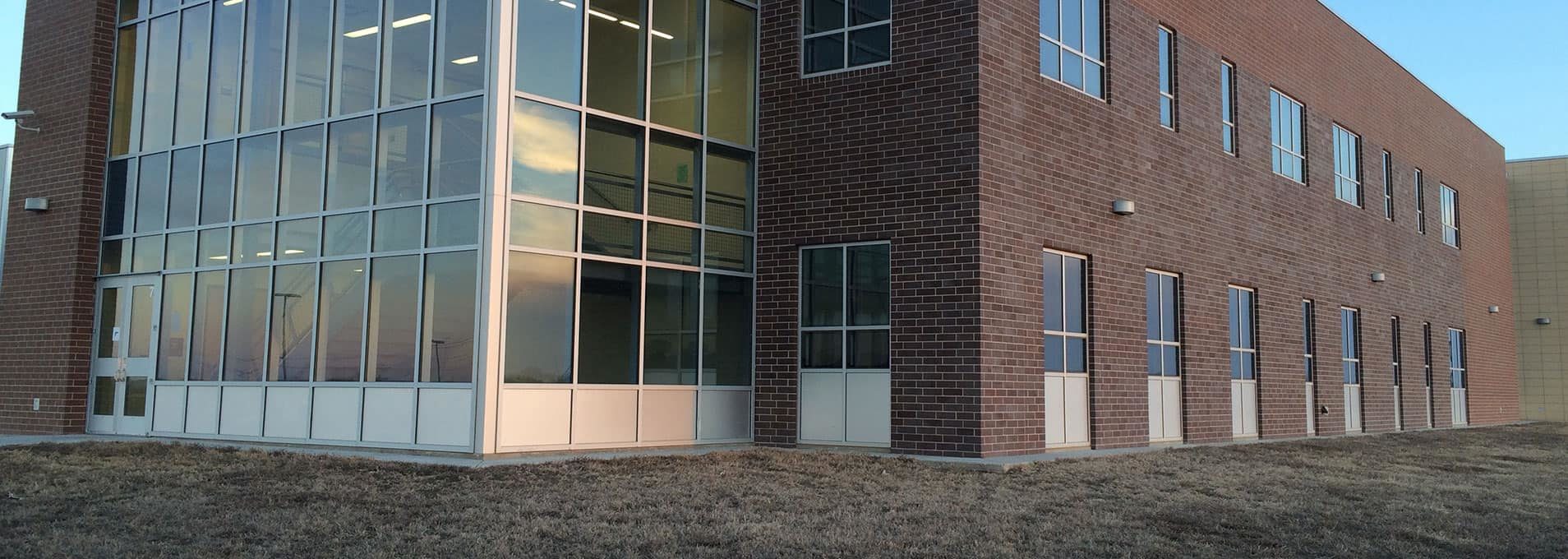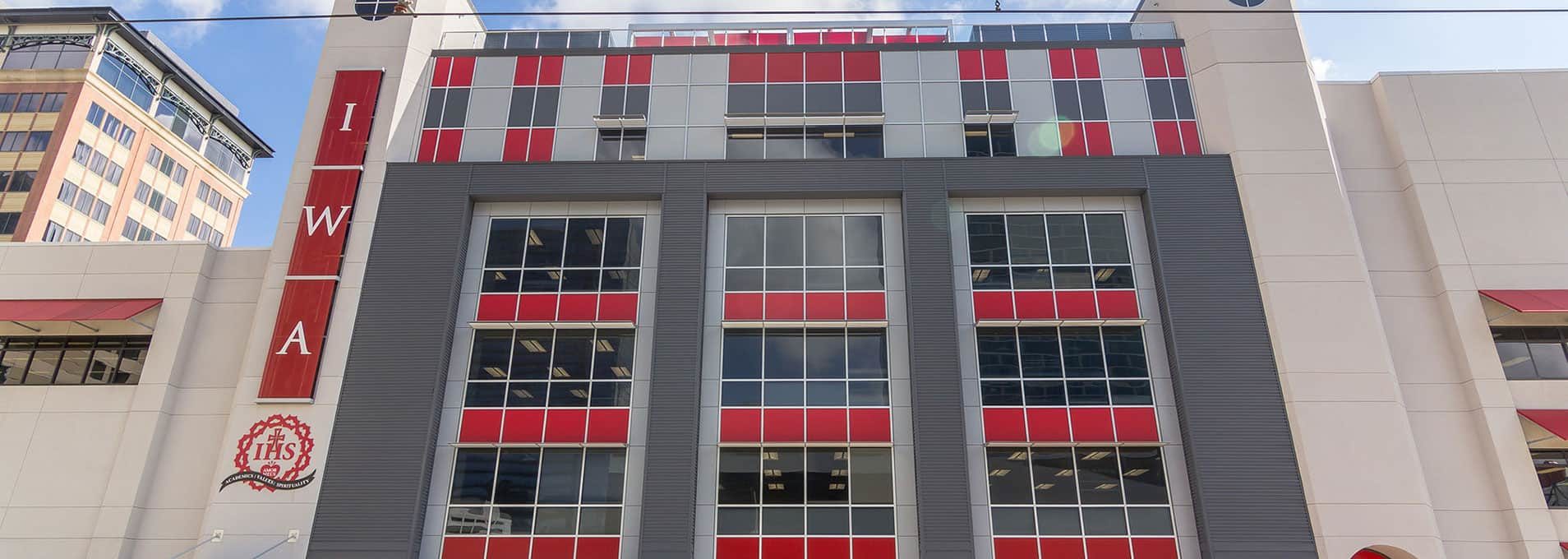The 7-Minute Rule for Glazed Panel Window
Table of ContentsFascination About Glazed Window PanelsThe Ultimate Guide To Glazed Spandrel Panel6 Simple Techniques For Glazing Infill PanelsWhat Does Glazed Spandrel Panel Do?
Regulated water penetration is specified as water that penetrates beyond the inner most vertical aircraft of the test specimen, but has actually a developed methods of drain back to the outside. AAMA Voluntary Specifications permit controlled water penetration while the underlying ASTM E1105 test technique would define such water penetration as a failure.This established simulates a wind driven rain event on the curtain wall to look for field performance of the item and of the setup. Field quality assurance and assurance look for water penetration has actually become the standard as home builders and installers apply such quality programs to help in reducing the variety of water damage lawsuits suits versus their work.
This equates to 3 times more deflection in an aluminum mullion compared to a comparable steel area under an offered load. Structure requirements set deflection limits for perpendicular (wind-induced) and in-plane (dead load-induced) deflections. These deflection limits are not imposed due to strength capacities of the mullions. Rather, they are developed to restrict deflection of the glass (which might break under excessive deflection), and to guarantee that the glass does not come out of its pocket in the mullion.
Building building may be such that there is a wall located near the mullion, and extreme deflection can cause the mullion to call the wall and cause damage. Likewise, if deflection of a wall is quite noticeable, public understanding might raise excessive concern that the wall is not strong enough - glazing panel.
How Glazing Infill Panels can Save You Time, Stress, and Money.

A deflection limit of L/175 is common in drape wall requirements, based upon experience with deflection limitations that are not likely to cause damage to the glass held by the mullion. State a provided curtain wall is anchored at 12 foot (144 in) flooring heights. The permitted deflection would then be 144/175 = 0.
823 inches at the maximum wind pressure. However, some panels need more stringent movement constraints, or definitely those that restrict a torque-like motion. Deflection in mullions is managed by different shapes and depths of curtain wall members. large double glazed glass panels. The depth of an offered drape wall system is generally managed by the location moment of inertia required to keep deflection limitations under the spec.



The allowed bending strength for particular aluminum alloys, such as those normally used in drape wall framing, approaches the allowed bending strength of steel alloys utilized in structure go to my site construction. Relative to other structure parts, aluminum has a high heat transfer coefficient, indicating that aluminum is an extremely great conductor of heat.
Get This Report on Glazed Window Panels


On a poorly carrying out drape wall, condensation may form on the interior of the mullions. This might cause damage to surrounding interior trim and walls. Rigid insulation is supplied in spandrel areas to provide a higher R-value at these locations. Infill describes the large panels that are placed into the drape wall in between mullions.


The 1 inch insulation glass is normally comprised of two 1/4-inch lites of glass with a 1/2 inch (12 mm) airspace. The air inside is generally climatic air, but some inert gases, such as argon or krypton may be used to offer much better thermal transmittance values. Curtain wall architecture structure In residential building and construction, thicknesses commonly utilized are 1/8 inch (3 site web mm) monolithic and 5/8 inch (16 mm) insulating glass.
Glazing Panel Things To Know Before You Get This
Glass may be used which is transparent, translucent, or nontransparent, or in varying degrees thereof. Transparent glass generally refers to vision glass in a drape wall. Spandrel or vision glass might likewise include translucent glass, which might be for security or visual purposes. Nontransparent glass is used in locations to hide a column or spandrel beam or shear wall behind the curtain wall.
Shadow box building develops an understanding of depth behind the glass that is sometimes desired. Material is another type of material which is common for curtain walls. Fabric is often much cheaper and functions as a less long-term service. Unlike glass or stone, fabric is much faster to set up, less costly, and frequently a lot easier to customize after it is set up.
Thin blocks (3 to 4 inches (75100 mm)) of stone can be inset within a drape wall system. The kind of stone utilized is restricted just by the strength of the stone and the ability to manufacture it in the appropriate sizes and shape. Typical stone types utilized are: calcium silicate, granite, marble, travertine, and limestone (large double glazed glass panels).
Metal panels can take various kinds consisting of aluminum plate; aluminum composite panels including two thin aluminum sheets sandwiching a thin plastic interlayer; copper wall cladding, and panels including metal sheets bonded to stiff insulation, with or without an inner metal sheet to create a sandwich panel. Other opaque panel materials consist of fiber-reinforced plastic (FRP), stainless-steel, and terracotta.